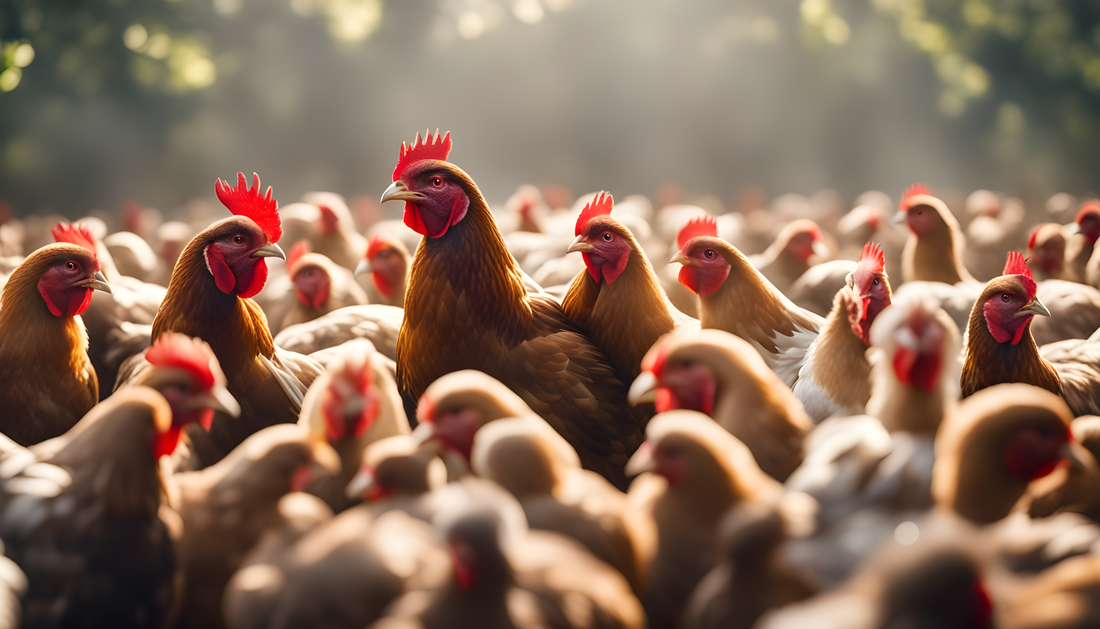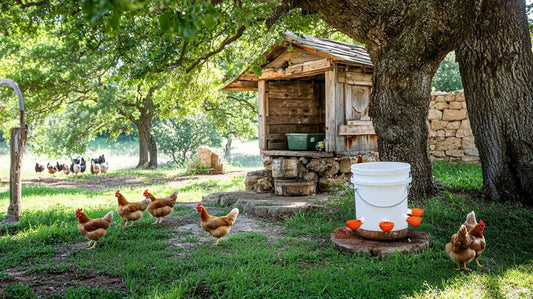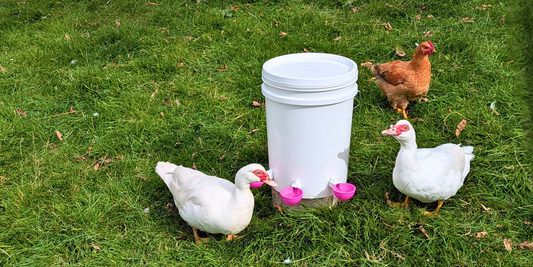Overcoming Feathered Challenges with Flair!
Welcome to the world of backyard chicken keeping, where the clucks and crows of these feathered companions add a rustic charm to your everyday life. As you embark on this poultry adventure, it's important to be prepared for the challenges that come fluttering your way. From stealthy predators to sneezy diseases and even a bit of boisterous clucking, we're here to guide you through each challenge with informed solutions that'll have you tending to your coop like a seasoned farmer.
Challenge 1: Predators - Protecting Your Feathered Flock
As the sun dips below the horizon, your chickens settle in for the night. However, this is also the time when predators awaken that see your precious chickens as a gourmet meal. Foxes, raccoons, hawks and even neighborhood cats can come out to play and turn your coop into a fast-food joint if not properly secured.
To ensure the safety of your flock, it's essential to implement comprehensive predator-proofing strategies.
✓ Solution: Coop Design and Predator Deterrence
- Upgrade your coop with locks and latches that even Houdini couldn't crack. Invest in a sturdy coop with walls and floors made of durable materials such as hardware cloth.
- Consider a dig-proof barrier and elevated coop that is slightly off the ground to prevent digging, and fortify it with a predator apron or wire mesh to discourage burrowing critters.
- Establish a strict bedtime routine – chickens are creatures of habit and will reliably return to the safety of their coop at dusk.
- Install automatic coop doors that open and close on schedule to keep predators out while letting your cluckers in to protect your chickens during vulnerable nighttime hours.
- Consider setting up motion-activated lights or even a guardian dog to deter nighttime prowlers.

Challenge 2: Poultry Health - Vigilance for Vibrant Flocks
Just like any living being, chickens can fall victim to diseases. Poultry disease can spread like wildfire, jeopardizing your entire flock. Fret not, for knowledge and diligence are your best defenses.
Being proactive about their health is crucial for maintaining a thriving flock and ensuring the production of quality eggs.
✓ Solution: Biosecurity and Regular Health Checks
- Start with a strong stock: choose breeds known for disease resistance.
- Source your chickens from reputable breeders or hatcheries to reduce the risk of introducing diseases. Make sure to quarantine any newcomers for at least two weeks before integrating them into your flock.
- Keep your coop clean and well-ventilated to prevent moisture buildup, a breeding ground for bacteria. Establish a rigorous cleaning schedule for your coop, regularly removing soiled bedding and disinfecting surfaces to prevent bacterial buildup.
- Regularly inspect your feathered friends for any signs of illness – watery eyes, ruffled feathers, lethargy, or changes in appetite.
- Quarantine any new additions for at least two weeks before introducing them to your existing flock.
- Establish a relationship with a poultry-savvy veterinarian who can guide you through any medical challenges and collaborate to develop a health plan tailored to your flock's specific needs.
Challenge 3: Noise - Managing the Clucks and Cackles
Chickens have a vibrant social life, and are far from silent creatures. They're not shy about expressing themselves. Their vocal range covers everything from triumphant egg-laying announcements to boisterous clucking conversations. While their clucks and cackles are endearing, they can pose a challenge if you have neighbors in close proximity.
✓ Solution: Breeds Selection and Environmental Noise Control
Embrace the clucks but manage the cacophony. Face your coop away from neighboring homes and bedroom windows and consider soundproofing if you're in particularly close quarters. Some breeds are quieter than others, so do your homework before choosing your feathered companions. You can prioritize quieter chicken breeds such as Australorps or Orpingtons if noise is a concern.
Provide plenty of enrichment such as perches, dust bathing areas, and hanging treats, to keep them entertained and distracted – a content chicken is often a quieter one. And hey, why not share some eggs with your neighbors as a goodwill gesture? Fresh eggs have a magical way of softening even the sternest of hearts.

Challenge 4: Egg Laying - The Sudden Disappearing Egg Mystery
You're all excited for your daily egg hunt, only to find... nada. Not a single egg in sight. Where did they disappear to? Occasionally, you may find yourself scratching your head at the sudden disappearance of eggs. Understanding your chickens' egg-laying habits can help you solve this mystery.
✓ Solution: Nest Box Design and Regular Egg Collection
First off, make sure your hens are at the right age for laying. Some breeds start earlier, while others take a bit more time. Create cozy, secluded nesting spots with soft bedding materials like straw or wood shavings. These nesting spots should mimic the feeling of a hidden, secure nesting location. Check your coop daily to keep an eye out for potential egg stashes and typically, hens lay eggs in the morning, so check the nest boxes mid-morning to collect eggs promptly to discourage hens from re-evaluating their hiding spots.
Consider installing surveillance cameras in your coop to identify any egg-eating culprits among your flock.
Embarking on the journey of backyard chicken keeping is a delightful adventure that comes with its own set of challenges. With a little creativity, armed with knowledge and a proactive approach, you'll be well-prepared to address predators, prioritize poultry health, harmonize the clucks, and crack the mystery of disappearing eggs. Every challenge conquered is a step closer to mastering the art of chicken keeping. Remember, a well-tended flock is a happy flock, and the rewards – be they fresh eggs, endless entertainment, or simply the satisfaction of nurturing feathered friendships – are worth every feather-ruffling challenge. Happy clucking! 🐔🥚





